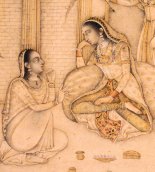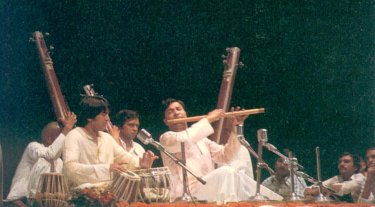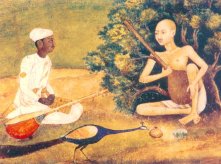|
|
 |
 |
|
  |
|
 |
|
|
|

|
| |
|
THE
MUSIC OF THE SPHERES |
|
| |
|
|
|
|
| |
|
| I am but a shadow.
This page belongs to a stalwart |
|
|
| on Indian Music
who will satisfy your thirst in the |
|
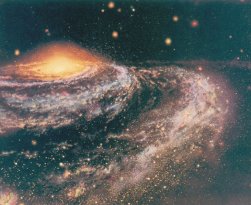 |
| future. Till
then, let me give you a little filler. |
|
| |
|
| What is music
? A combination of notes, in |
|
| consonance with
each other, placed in the same |
|
| octave or a
different one. The effect? You feel a |
|
| fountain spring
into life inside you. A distant star |
|
| twinkling in
a clear dark sky. Or the stabbing pain |
|
| as in the separation
between lovers. |
|
| |
|
| The harmonic
relationship between consonant |
|
| notes in Indian
music is termed as NAD. But what |
|
| then is the
Music of the Spheres ? |
|
|
|
|
| |
|
|
| |
|
|
|
| |
|
|
|
| |
|
|
|
| |
|
|
|
| |
|
|
|
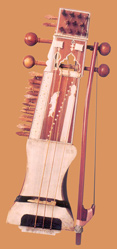 |
|
|
|
| |
|
|
| |
|
|
| |
|
|
| |
|
|
| |
|
|
| |
|
|
| |
|
|
|
| |
|
Jamie
James writes “Picture to yourself, a universe in which everything makes
sense. A serene |
|
| |
|
order
presides over the earth around you and the heavens above revolve in sublime
harmony. |
|
| |
|
Everything
you can see and hear and know is an aspect of the ultimate
truth : the noble simplicity |
|
| |
|
of
a geometric theorem, the predictability of the movements of
heavenly bodies, the harmonious |
|
| |
|
beauty
of a well proportioned fugue all are reflections
of the essential perfection of the universe.” |
|
| |
|
|
|
|
| home |
|
|
|
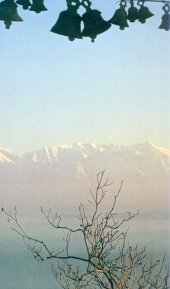 |
|
This is “The
Music of the Spheres.” The NAD-BRAHMA. |
| |
|
| |
This music is
emanated by the Cosmic Entity as all the celestial |
| |
bodies move
in perfect coordinated motion. This
forms the |
| |
essence of Indian
Music. |
| |
|
| |
Remember our
first page “The Creation Hymn ?” It throws light |
| |
on man's place
in the universe. The Cosmos is 14 billion years |
| |
old. But before
that ? NOTHINGNESS ! Can everything have come |
| |
from nothing
? But it did. We did. Music did too. The primordial |
| |
sound heard
was “Aum” meaning “Amen” So be it. It appealed |
| |
to the soul,
the temperament, the sensibilities, the emotions. |
| |
The effect produced
was pure and enlightening providing a |
| |
connection between
our earthly existence and eternal reality. |
|
|
| prologue |
| welcome |
|
|
|
|
| contents |
|
|
|
|
| subject
moderators |
|
|
|
|
|
history |
|
|
|
|
|
sexuality |
|
|
|
|
| social
landscapes |
|
|
|
|
| art |
|
|
|
|
| dance |
|
|
|
|
| literature |
|
|
|
|
| music |
|
|
|
|
| cinema |
|
|
|
|
|
environment |
|
|
|
|
|
economics |
|
|
|
|
|
pot pourri |
|
|
|
|
|
|
feedback |
|
|
Let
me take you by your “heart” and lead you through some of the alleys of Indian
Music. |
|
| |
|
|
|
|
|
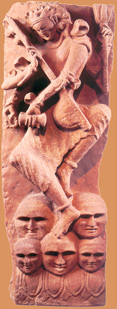 |
|
|
MUSIC
IN THE VEDIC AGES |
|
| |
|
|
|
|
| |
|
| During 1400-1500 B.C.
the Rig Veda was created. Not |
|
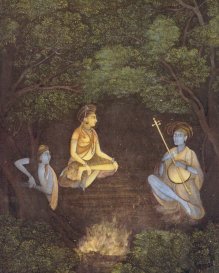 |
| written. But
sung. The sages dwelt amidst Nature's bounty. |
|
| The sun, the earth,
fire, water, dawn any aspect of Nature |
|
| was eulogized and
worshipped. They constructed altars. |
|
| Lit holy pyres and
sang praises of Nature by chanting in |
|
| tune, “mantras “ dedicated
to each aspect. The tremendous |
|
| spiritual force and
purity of the suktas (couplets), shlokas |
|
| and mantras, were mainly
prayers for the well-being of the |
|
| universe and the physical,
mental and spiritual selves of |
|
| all - asking the Supreme
Being to free us from pollution, |
|
| turmoil, illness, discomfort
and misery and bless all with |
|
| Peace. The repetitive
singing of the “mantras” invoked a |
|
| special pattern within
oneself. |
|
|
|
| |
|
|
| |
|
|
| |
|
|
| |
|
|
| |
|
|
| |
|
|
| |
|
|
| |
|
|
| |
|
|
| |
|
|
| |
|
|
| |
|
|
| |
|
|
|
|
| |
|
|
Society
was regulated by these “elaborate worshiping spells' and common people came
to “hum” |
|
| |
|
|
the
melody of the 'mantras'. The basic value systems of community life came
to be encouraged |
|
| |
|
|
through
these. Everyday activities like going on a voyage, beginning to till the
land, making an |
|
| |
|
|
offering
of cattle, distributing wealth among the poor were accompanied by elaborate
harmonious |
|
| |
|
|
chantings.
Majority of the “Sama Veda” chants were in descending scales or octaves. |
|
| |
|
|
|
|
|
| |
|
|
Music
was the great binding force of this era. |
|
| |
|
|
|
|
|
| |
|
|
|
|
| |
|
|
|
| |
|
|
|
| |
|
|
|
| |
|
|
|
| |
|
|
|
| |
|
|
|
| |
|
|
|
| |
|
|
|
| |
|
|
|
| |
|
|
|
|
|
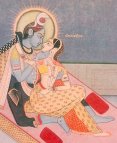 |
|
|
NORTH
INDIAN CLASSICAL AND CARNATIC MUSIC |
|
| |
|
|
|
| |
|
In
the period after the Vedic chants, we come across “Gandharva” or “Margi
Sangeet” with |
|
| |
|
Lord Shiva as its subject. The concept of the ‘Raga', characterizing North
Indian classical music,
|
|
| |
|
takes
a definite shape by the time of Matanga (5th century A.D.). Indian classical
music based |
|
| |
|
on
the 'Raga' form, refers to both North Indian and Carnatic music. These
are predominantly |
|
| |
|
individualistic
in nature. Rhythm is inextricably tied to the
'Raga' form. |
|
| |
|
|
|
|
| |
|
So,
what is a 'Raga' ? |
|
| |
|
|
|
|
| |
|
|
A
'Raga' consists of a fixed and unchangeable set of notes presented in the
form of an ascending |
|
| |
|
|
and
descending scale. Then the musical notes carve intricacies through various
combinations |
|
| |
|
|
within
a particular 'Raga'. Indian classical music is based on MELODY. Here
the emotional effect |
|
| |
|
|
or
appeal is created by means of notes or tones following each other
in succession in a multi |
|
| |
|
|
dimensional
way and having a relationship to each other on
the basis of aesthetic principles. |
|
| |
|
|
|
|
|
| |
|
|
| There
was a beginning in North Indian classical music. |
|
 |
|
Once upon a time. And then ? And then the music flowed |
|
|
like a river and its distributaries going to meet the mighty |
|
|
ocean. The distributaries are the “Gharanas". |
|
| |
|
| The
various schools which developed. Expounding |
|
| distinctive
styles, rhythm, form, structure, in a variety of |
|
|
playing, singing, thinking all different yet ONE. The oneness |
|
|
of the mother river carrying the waters to the ocean that is |
|
|
North Indian Classical Music. |
|
|
|
| |
|
|
|
| |
|
|
|
| |
|
|
|
| |
|
|
|
| |
|
|
|
| |
|
|
|
| |
|
|
|
| |
|
|
|
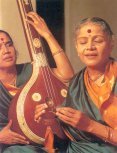 |
|
|
|
| |
|
|
|
|
| |
|
Carnatic
music is characterized by the intricate use of notes within a 'Raga' which
'sound' different |
|
| |
|
from
the North Indian ones, for style. Forceful rendering of the meandering melodic
movements |
|
| |
|
of
the notes, complexity in the arrangement of musical patterns and rhythmic
elasticity are |
|
| |
|
predominant
features. The text and music permit great freedom for
creative improvisations. |
|
| |
|
Exciting
syncopations and cross-rhythms form an essential part of its beauty. |
|
| |
|
|
|
|
| |
|
|
|
|
|
| |
|
|
|
|
| |
|
|
|
| |
|
|
|
| |
|
|
|
| |
|
|
|
| |
|
|
|
| |
|
|
|
| |
|
|
|
| |
|
|
|
| |
|
|
|
|
|
| |
|
|
|
|
|
| |
|
|
FOLK
MUSIC AND OTHER VARIATIONS |
|
| |
|
|
|
|
|
| |
|
|
Confused
? There is a simple element too. It is India's varied and vibrant folk music,
closely |
|
| |
|
|
connected
to each of the social, cultural and religious festivals of the land. Apart
from these, |
|
| |
|
|
there
are other types of songs established in stylized schools by famous musicians.
But, these |
|
| |
|
|
shall
be covered in our future pages. |
|
| |
|
|
|
|
|
| |
|
|
|
|
|
| |
|
|
|
|
| |
|
|
|
|
| |
|
|
|
|
| |
|
|
|
|
| |
|
|
|
|
| |
|
|
|
|
| |
|
|
|
|
| |
|
|
|
|
|
| |
|
|
THE
CHARM |
|
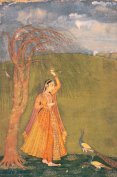 |
|
|
|
|
|
| |
|
So
what is the basic difference between Indian and Western Music ? HARMONIZATION
, on the |
|
| |
|
arrangement
of notes in DIFFERENT octaves, forms the basis of Western music, while
we restrict |
|
| |
|
ourselves
to the 'Ragas' consisting of notes in ONE musical pattern. Each
one is distinct in its |
|
| |
|
appeal.
“Ragas' which suit the time of the day and mood and seasons.
“Bhairavi” reflects the |
|
| |
|
purity
and freshness of dawn. “Todi” the blaze and languor
of the afternoon. “Yaman” - the |
|
| |
|
obvious
alluring beauty of the evening. “Darbari
Kanada “ and “Malkauns” the deep contemplative |
|
| |
|
mood
of the night. Seasons bloom
with “Basant” and “Bahar” in Spring and “Malhar” in the rains, |
|
| |
|
Chandni
Kedara “ on a full
moon night. So intense were the emotive qualities of the 'Ragas', that |
|
| |
|
magical
powers came to be
endowed in them. A story goes as such : Once Emperor
Akbar asked |
|
| |
|
his
favourite and most powerful
musician Tansen, to sing Raga Deepak (Melody of Lights). As
the |
|
| |
|
singer
began to sing the Raga, one by one the oil lamps in the palace courtyard,
where he was |
|
| |
|
performing,
began to light up by themselves ! |
|
| |
|
|
|
|
|
| |
|
|
So
how do we conclude or should we say begin ? Indian music does not go in
for variety in one |
|
| |
|
|
piece
of composition like its Western counterparts. It reflects ONE emotion. It
reflects the oneness |
|
| |
|
|
of
the Universal Music of The Spheres. It does not express the emotions
confined within human |
|
| |
|
|
lifestyles
but brings the Limitless Vast Expanse into our lives.
That is why, Indian Music transcends |
|
| |
|
|
the
confines of human pain, frustration or even happiness
and soars, taking our minds
on its wings |
|
| |
|
|
out
into the Cosmos. |
|
| |
|
|
|
|
|
| |
|
|
| You browser there.
You are Andromeda. I am |
|
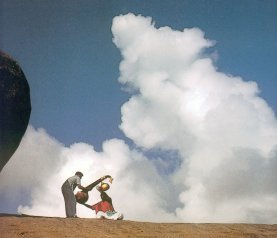 |
| Orion. You there. You
are Alpha Centauri. We are |
|
| all celestial beings.
Each of us receiving and |
|
| contributing a strain
of melody, from and to the |
|
| Cosmic Music. Sit straight.
Close your eyes and |
|
| chant “Aa au mmn.”
You are connected. Feel the |
|
| tune flow in your
blood. It is dancing in your |
|
| bones. Open your eyes.
There you are. In the |
|
| center of a galaxy.
You can see the Universe. |
|
| Hear the Music of
the Spheres. It is yours. |
|
| |
|
| But
you must want it first. |
|
|
|
| |
|
|
|
| |
|
|
|
| |
|
|
|
| |
|
|
|
| |
|
|
|
| |
|
|
|
| |
|
|
|
| |
|
|
|
| |
|
|
|
| |
|
|
|
| |
|
|
|
| |
|
|
Love, |
|
| |
|
|
|
|
|
| |
|
|
Sushweta |
|
| |
|
|
|
TOP |
|
| |
|
|
|
|
|
| |
|
|
|
|
|
![]()

![]()





